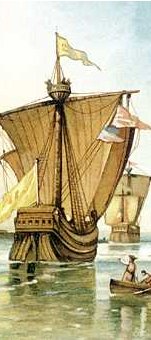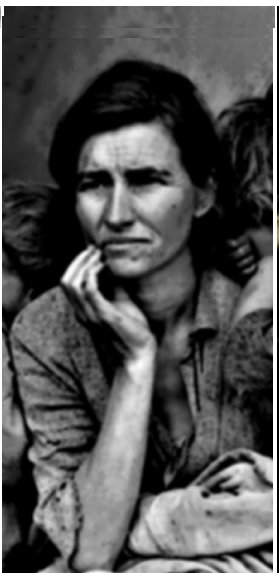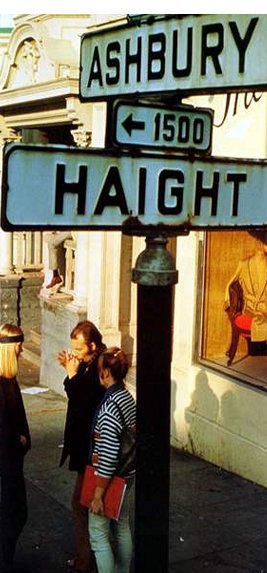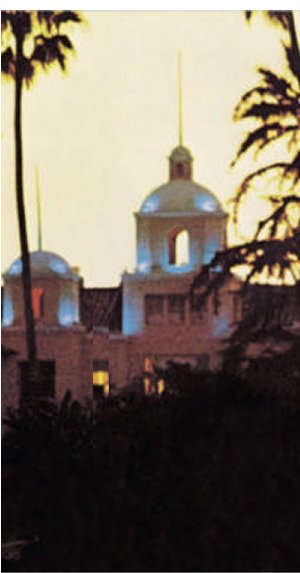From National Underdog to National Leader Nam Le
Kevin Starr is an American historian, best known for his ¡§California¡¨
series which chronicles different time periods of the state. A graduate from Harvard
University, Starr works as both a
writer and traveling lecturer, primarily speaking at various UC campuses.
Serving a two-year stint in West-Germany for the United
States Army, Starr holds the rank of lieutenant. In the ten years between 1994 and
2004, Starr worked as the California State Librarian. Consequential to his accurate
historical recitations, Starr was recently awarded the National Humanities
Medal in 2006
In his book, The Dream Endures,
Kevin Starr writes about California
at the turn of the 19th century. He writes of the social, cultural,
and economic changes in Californian cities¡Xand California
as a whole¡Xexperienced. As a whole, California
ultimately, ¡§achieved a direct connection with the best possibilities of
themselves and the society they were seeking to create.¡¨1 Throughout
the book, Starr concerns himself primarily with the intersection of social and
imaginative experiences, both public and private.
In the early twentieth century, an
atmosphere of calm and relaxation permeated California.
Californians pursued entertainment and recreation outdoors as opposed to
museums. The ¡§Golden State:
brought in a large portion of its revenue from internal and external tourism.
This was a direct consequence of the rise of the middle class, whose
progressive spending, ¡§had discovered its first premise¡Kin the automobile.¡¨2
With the availability the Pacific Ocean, the beach
became a source of recreation along the coast of Southern California.
As such, various developers and companies began erecting luscious beach
resorts. However, California was
not only known for its numerous resorts, beaches, and sunshine. In Northern
California, college-based towns were established. Despite this
fact, other towns and cities started off as art towns: for example, Herbert
Bolton established a library of art. The University
of California Berkeley soon gained
prominence as Professor Oppenheimer helped establish the school as a top
competitor in theoretical physics. As a city, Berkeley
depended upon the university for its ambience and personal identity. Northern
California was also active in athletics as well, going beyond to
even establish various sports as national pastimes. Though today football is a
national pastime and sport, it was incidentally a match in California
that made it so. Academic and athletic rivals, Stanford University and
University of California Berkeley engaged each other in a highly anticipated,
publicized, and nationally followed game; it was because of this game that
California, and consequently America, accepted football as its national sport. California
subsequently spawn various organizations focused on environmental issues.
Artists from all over congregated in California,
with such painters as William Keith embracing the vast openness of the state
and paint the scenic landscape of Northern California.
Artist colonies developed in the 1930s, many of which remained isolated and
apart from the rest of society. One of these colonies, Carmel-By-The-Sea, was a
flourishing colony of isolationist artists that emerged in the 1930s. These
artists preferred isolation and quaint simplicity, a lifestyle that California¡¦s
vastness allowed. Also, while the rest of the nation rushed to modernize and
industrialize, California¡¦s
unsettled territories allowed for the aged customs of ranching a continued
existence. Astronomical development and study also took flight in California
during the early 1900s, especially in, Pasadena.
Initially agricultural, Pasadena
became the center of science and humane learning, ultimately establishing the
California Institute of Tech and the Huntington Library. It was at the
California Institute of Tech that Albert Einstein was able to test and verify
his own theories with the help of Pasadena-based scientists.
In
1931, San Diego prospered despite
the Depression. A sea-based city, San Diego
was an objective of the United States Navy, who worked to build and develop a
naval base there, ¡§pumping millions of dollars into construction projects.¡¨3
To this request the city agreed, joining the network of naval ports as a matter
of economic security and policy. Within the San Diegan area, Alonzo Horton
began establishing different settlements in hopes of promoting more migration
into the area; he achieved this goal, as thousands of people began settling in
the San Diego area. With the influx
of new comers, San Diego
consequently developed a network of tourist-greeting hotels, most notably the
Hotel del Coronado. Culture also shaped the San Diego
experience; the city established itself as a place of beach-recreation and
relaxation. For example, the Kneipp Sanitarium offered spa treatments for all
those who required it. Spiritualism was also rich and active within the, which
had a vast establishment of churches and religious communities. However
religious, San Diego was also rich
in education¡Xsporting an established public system¡Xalong with art academics,
theatres, and communities. A notable art community was the Theosophical
Community, a center for serious artistic pursuit. Between 1900 and 1920,
numerous debates were held over how San Diego
should develop as a city, some preferring a more urban environment why others
preferred a more suburban and progressive feel. This is evident in the Mayoral
Elections of 1913 and 1917, with George Marston wanting to implement
Progressive programs while Louis Wilde calling for a Los
Angeles plan. Though Wilde is elected, he consequently
receives little success in his two terms as mayor. As in the north,
environmental awareness existed in San Diego,
with the city granting the Balboa Park
a generous donation of trees and shrubs. From this, the Park Improvement
Committee was established while environmentalist Kate Sessions instituting an
annual Arbor Day celebration. Now in San Francisco,
the city¡¦s leader¡XMayor Rolph¡Xwas a progressive follower that reformed the city
and implemented many systems of public works. Under his leadership, San
Francisco became a profitable and notable market and
manufacturing center, ultimately acting as an important center for commercial
exchange for Chicago and Hong
Kong. So active and strong was the San Franciscan economy that
companies were even able to flourish during and throughout the Depression, a
rare thing during that time period. A progressive city, San
Francisco was active in personal reform and the
institution of public works¡Xheaded by the WPA. As such, San
Francisco also hosted a strong public education
system, as well as an active and diverse religious scene. The two prominent
religions of the city was strict Judaism and Roman Catholicism; surprisingly,
practitioners of either religions¡Xin their respective communities¡Xwere able to
coexist peacefully, a sure sign of San Francisco¡¦s religious tolerance and
liberalism. However, San Francisco
also had a prominent nightlife, with restraints, bars, and nightclubs being
established; consequential of this was an increase in prostitution and crime.
With the rise of San Franciscan nightlife, the city also had a rising number of
both district attorneys and writers and columnists. As such the writing
community boomed, with the city offering a western commune for eastern-based
writers. Artists and musicians of stature also had a special place in pre-war San
Francisco, having available to them an active
community of music and art thanks to active commissioners. By the end of the
1930s, San Francisco remained on
the forefront of banking, manufacturing, foreign trade, art, and culture. In
the south, LA hosted elements of both an urban city and suburban layout. Though
Chinatown was essentially nonexistent in LA, a large
Japanese population congregated within the city, establishing Little Tokyo, the
largest overseas population of Japanese. Contrary to San
Francisco, LA was hit enormously hard by the
Depression; as such homelessness plagued the city while soup kitchens were
prominent. The Depression caused the LA to become extremely liberal and
Democratic, open to reform and progressivism. In spite of this, the Hollywood
business district began expanding outwards, working steadily to restore the
city back to its previous status. Like the Chinese had been in San
Francisco, Mexicans, Blacks, and Asians were
restricted to certain districts, with the Mexicans being subjected to
repatriation and removal from county relief rolls. With the establishment of
ethnic districts and racial discrimination, blue collar and lower middle class
communities were established, most notably South Central LA. In these
communities ethnic minorities were subjected to poor conditions and faced
little hope of economic mobility. Throughout the nation, race riots, mob
killings, and job discrimination brought an influx if blacks venturing to LA in
hopes of ownership and freedom. However these hopes were unfortunately
farfetched, as the black newcomers were still excluded from jobs. Consequently,
LA became a breeding ground for criminals and individuals desperate to earn
some money; this in turn lead to a perfect environment for lawyers and public
defense attorneys.
Throughout
the early decades of the 20th century, photography achieved a
special intensity in California.
Carleton Watkins, a photographer, achieved an epic level of perception and
presentation that fixed photography as the premier art from of the coast.
Between the 1920s and 30s, photographers Edward Weston and Ansel Adams renewed
photography in California by capturing fleeting milliseconds of perception in a
portfolio of images that could preserve images. In 1932, there was a gathering
of photographers in the Bay Area, all of who sought to liberate photography
from standard and past styles; the photographers who gathered here became known
as the Berkeley Circle, or
Group f/64. They introduced the idea that photography should have no idea
except the idea of itself. Watkins brought photography to the mainstream,
capturing images of the Guadalupe Quicksilver Mine and Yosemite,
as well as documenting the rise of the nineteenth century San
Francisco. Ansel Adams, a native San Franciscan and
environmental supporter, developed the notion that visualization involved the
full and complete integration of the photographer, the object photographed
environmental conditions, and the photographer¡¦s visualization of a print he
wished to see, together wit his emotional response. Adams
captured stunning images of Yosemite and the High
Sierras, and ultimately acted as the spokesman for Group f/64. Numerous photo
books, such as Seeing California with Edward Weston and California
and the West, proved that the Golden state had a sort of heroic simplicity
within its landscape. In the 1920s, Post-Impressionism exploded upon the art
scene, providing the public with mystical views of nature and landscape.
Watercolorists also became prominent, connecting with people, architecture, and
urban settings. Now supported by federal programs, Mexican muralists recounted
the history of the state with a Mexican accent while sculptures flourished
indoors and out. With the art revolution at hand, a new Californian image was
being formed, with many artists being influenced by foreign styles. In the
1930s, Hollywood was full of
achievement, so ¡§many great films [being] produced in rapid sucession;¡¨ it was
the putting out of these movies that helped the public distract itself from the
throes of Depression.4
Literary
fiction thrived in California due
to its lack of historical association. Writers felt dropped into a void that
deconstructed more elaborate modes of language. In the 1930s, California
fiction was noticeably dissenting and radical from the traditional writing
methods, which were generally ¡§novels of sociological sweet and grandeur.¡¨5
Now with the coming of war, disturbed Californians found themselves unwilling
to set aside the value of personal ethics and human culture. Former president Hoover
sought to archive WWI and its aftermath to avoid another war through a better
understanding of culture. With the initiation of WWII, whole generations of
artists and intellectuals sought refuge in metropolitan Southern
California, which fueled europeanization of Hollywood.
German and French communities consequently formed, themselves producing
immensely skilled contributors to society. These new immigrants brought to Southern
California creativity, rituals, and protocols of daily life.
In
The Dream Endures, Kevin Starr essentially claims that from the
beginning of the 20th century, California
has acted as the leader of reform and change, influencing everything from
architecture to art and culture. With every chapter, Starr writes of how the
entire nation was influenced by everything in California,
emulating trends and looking to the state as an example; such as the Stanford
v. Berkeley football game, which
¡§signaled the coming of age of a football culture.¡¨6 He cites the
reason for California¡¦s immense
influence as its relative newness and inexperience as a state, consequently
acting as a meeting place for all others from different states. This position
of his is evenly supported and validated, through concrete examples
Starr
looks at each newly important place where Californians lived out this relaxed
lifestyle, from Los Angeles, to the
Bay Area. He evenly covers the emergence of rich urban life in each
aforementioned area, chronicling everything, from economics to religious
emergence. As for historiography, Starr writes from a New Left point of view.
This is because he brings up the causes for inner-city crime within California,
citing the inherent segregation of communities and mistreatment of minorities
as the reason for slums. He writes of how ¡§with race riots, lynchings, and the
rise of the KKK¡KAfrican Americans found themselves exlcluded from...jobs.¡¨8
This provides a reason from the rampant crime that followed, along with the
rise of ghettos and slums.
Starr
proves himself an adept historian and storyteller, garnering the praise of
reviewer Ann Parker, who says that, ¡§Starr¡¦s explanation of artistic, literary,
musical, and architectural trends¡Kgives a thorough but easily readable
portrait.¡¨9 From this, the reviewer paints the book as once being
very accessible and easily read. In another article, Kirkus Reviews writes of
how Starr provides ¡§a panoramic account of the Golden
State during the turning-point
years before America's
entry into WW I.¡¨10 From this, the reader derives the notion that in
his book, Starr touches upon every aspect of the Californian spectrum, from the
broadest of topics to unknown characters.
The
book is an excellent example of the social and cultural history of California
at the turn of the last century. The fact that Starr allows for the viewing of
the stirrings of uniqueness in the social and cultural evolution of California
allows the reader to emerge themselves within the ¡§Golden
State¡¦s¡¨ essence. As his purpose is
the accentuate California¡¦s nation-wide impact, Starr writes of how, ¡§The
Depression¡Kwas a mass experience, and it required a mass medium, film, though
which to¡Kassuage the fars and release the [nation¡¦s] anxieties,¡¨ which
ultimately shows how California-established foundations reached out to the rest
of the nation.11 All the book¡¦s thirteen chapters are evenly
developed and written, which consequently gives the reader a sense of balance
and continuity.
In
the first forty years of the 1900s, the things that occurred in California
were distinctive and different from everything else because as a state, California
had only just begun establishing itself. Prior to the twentieth century, California
had only be known for the Gold Rush. However at the turn of the century, cities
such as San Diego began further
developments while Hollywood found
itself at the forefront of entertainment and media. Also, California
as a whole experienced an influx of immigrants from every part of the world who
¡§brought with them¡Ktheir creativity.¡¨12 Consequently taking
influences from these people in both architecture and arts.
Starr
believes California to be
important to the rest of the country that California
stood as the nation¡¦s example for dress, architecture, media, and architecture.
This idea is reflected with the emergence of Hollywood as a national influence,
sustaining, ¡§powerful and direct contact its audience [to] play¡Ka significant
role in the subliminal and public life of the nation¡¨13 With every movie it produced, Hollywood
captured and mesmerized the entire nation, in turn controlling what style of
media was shown.
Throughout
the book, Kevin Starr continuously proves himself a skilled writer, historian,
and storyteller. Coupling concrete facts with interesting stories of notable
individuals researched, ¡§in the California History Room of the California State
Library¡K[to the] Central Library of Los Angeles Public,¡¨ Starr is able to
maintain a consistent and engaging narration.14 By evenly analyzing
the various aspects of each region, Starr creates a sense of continuity and
easy progression within the reader¡¦s mind.
1. Starr, Kevin. The Dream Endures. 2. New
York: Oxford
University Press, 1997.
2. Starr, Kevin, 45.
3. Starr, Kevin, 4.
4. Starr, Kevin, 91.
5. Starr, Kevin, 244.
6. Starr, Kevin, 285.
7. Starr, Kevin, 36.
8. Starr, Kevin, 178.
9. Parker, Ann. 1. Sacramento:
Reed Business Information, Inc, 1997.
10. Reviews, Kirkus. 1. United
States: United
States Kirkus Associates, 1997.
11. Starr, Kevin, 245.
12. Starr, Kevin, 396.
13. Starr, Kevin, 244.
14. Starr, Kevin, 429.










